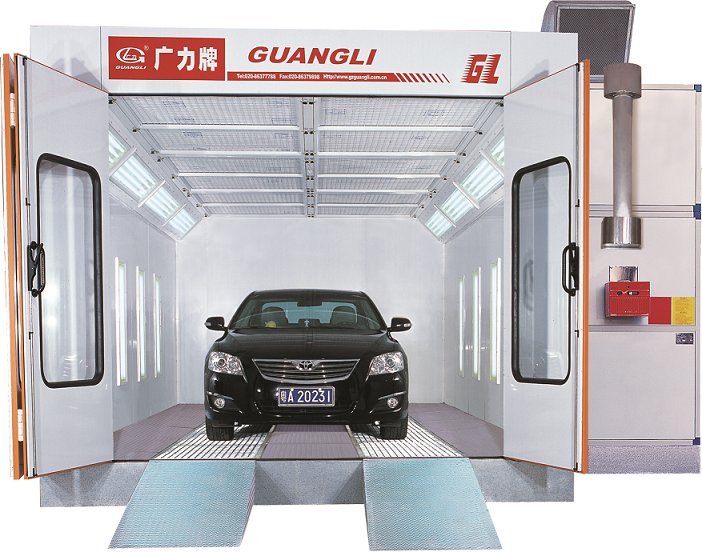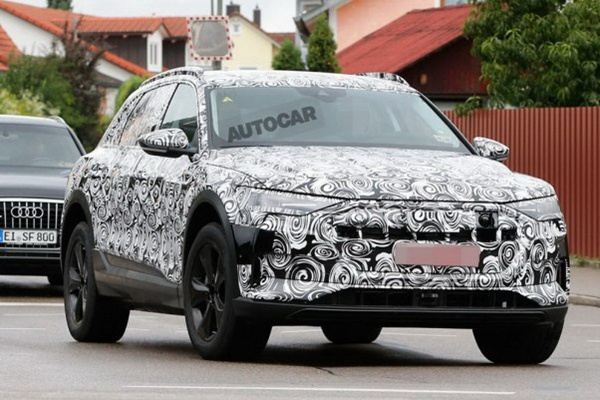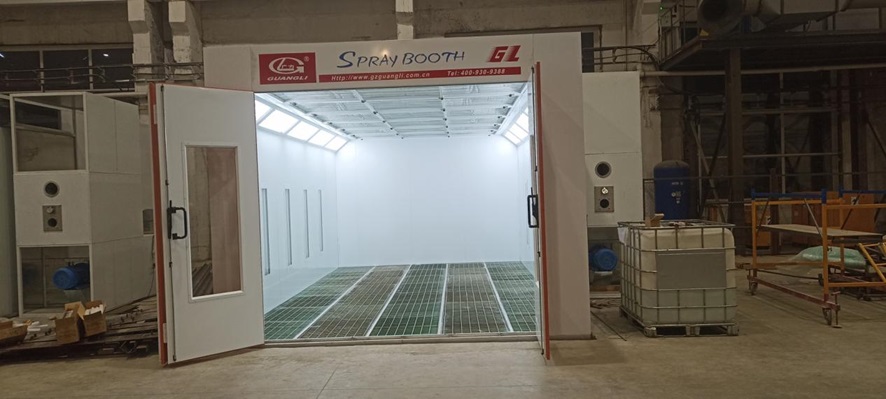Cause of Paint Room Fire Accident
Paint room used in automotive, machinery, hardware, furniture, chemical and other industries for the surface paint, paint job. In recent years, auto repair plant around the fire accident,the reason, mostly in the paint room. Most of the chemicals used in the process of automobile paint production and painting are easy to catch fire. The high-temperature environment of paint room is accompanied by paint and flammable materials, so that the paint room has become a high-risk operation point. However, garage repair mechanic non-standard operation, but also increased the number of fire in the paint room. August 2008, a car repair shop in a fire, the local fire brigade sent two fire engines 10 officers and men go to fight. After the reconnaissance, it was found that the fire was located in the paint shop of the repair shop. The paint room also contained 2 barrels of heated diesel oil and a large amount of paint for paint. Seven repair shops connected side-by-side with the paint house were parked with the Audi A6, Passat and other more than 10 limousines, repair shop is surrounded by a large number of houses. Thanks to the timely control of the fire, or if it caused a large area burning, an explosion, the consequences would be disastrous.
Cause of fire accident
Paint room fire is mainly caused by the heat exchanger that is commonly known as the hearth, in which the selection of the hearth, the thickness of the wall, the size of the size is very crucial. Lead to paint room for a number of reasons, from the quality of paint room, the following three kinds of conditions are more likely to cause fire.
1. Furnace texture is good or bad
Since the paint room fire is mainly from the hearth, the quality of the hearth material is very crucial. Large baking room furnace chamber is made of standard stainless steel, good quality, high temperature to about 1100 ℃, while some small-scale workshop baking room furnace is generally used stainless steel or stainless steel, the high temperature of only 700 ℃ or so. When the paint room in use, the normal temperature of the flame is between 900 ~ 1000 ℃, defective stainless steel material in the frequent combustion process is easily burned, resulting in the proliferation of flame into the house, the flame contact the paint room Of the powder, causing a fire.
The same stainless steel, the thickness is not the same, the fire will have a great impact. Good paint room furnace thickness is 2.0mm or 2.5mm, but some baking room furnace thickness of only 1.2mm or 1.5mm, the furnace is too thin, its service life is also short, paint room in the use of the period of time, easy to produce perforation , Resulting in paint room fire. If the material used in the furnace itself is defective, coupled with too thin, the probability of fire in the paint room is even greater.
2. The furnace volume is too small
Another important reason that causes the paint room to catch fire is that the furnace volume is too small. A good paint room fire only in the middle part of the furnace combustion, the normal combustion flame will not burn the heat exchanger wall. The length of the qualified furnace is 1.4m, so that the flame can only be burned in the middle part, that is to say, it does not contact with the combustion, so that the service life of the stainless steel becomes longer. At the same time, the flame can fully contact with the air to ensure uniform force when baking. And because of the material is more expensive, the volume of some baking room furnace is only 90cm, it is easy to make the flame and the wall in direct contact, not only lead to uneven force in the baking process, but also shorten the life of the furnace, increasing the furnace Perforated may.
3. Improper operation of mechanics
Paint room in the paint process due to improper operation of mechanics caused by the fire danger. First, due to work needs, maintenance companies overtime more work in the state of burnout will inevitably lead to the accident; Second, many spray painters and operators lack of chemicals, dangerous goods (including paint and organic solvent Agent) basic performance, especially the lack of safety knowledge of the use of chemicals and dangerous goods; Third, many repair shop staff did not undergo a rigorous training assessment on the job, completely do not understand the safe production practices; Fourth, due to mess Put, run, run, drip, leakage caused by accidents, and even open fire involved, resulting in a fire.
Offer by GL Spray Booth Factory.












